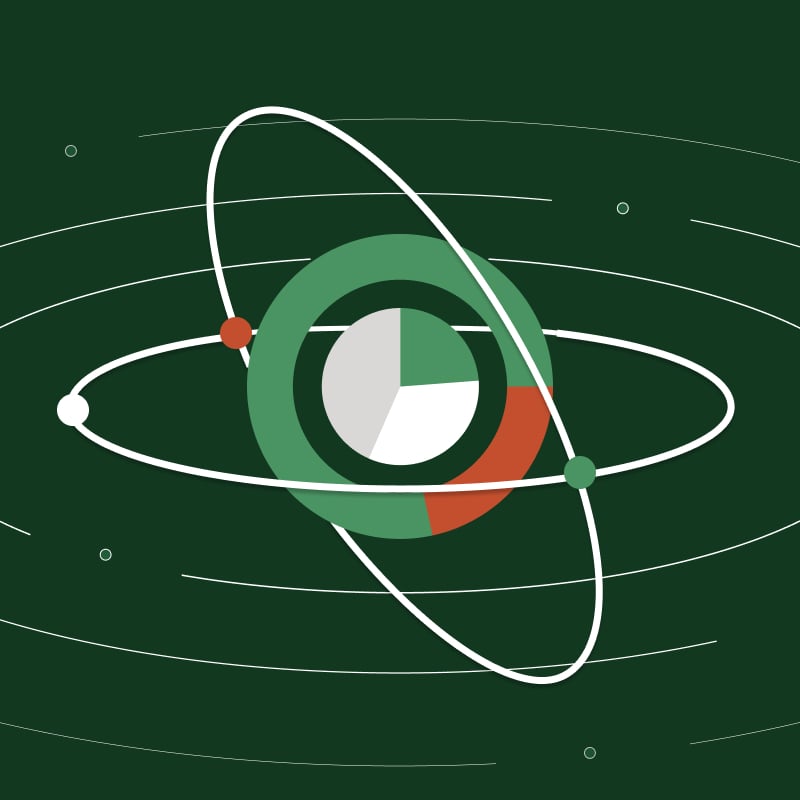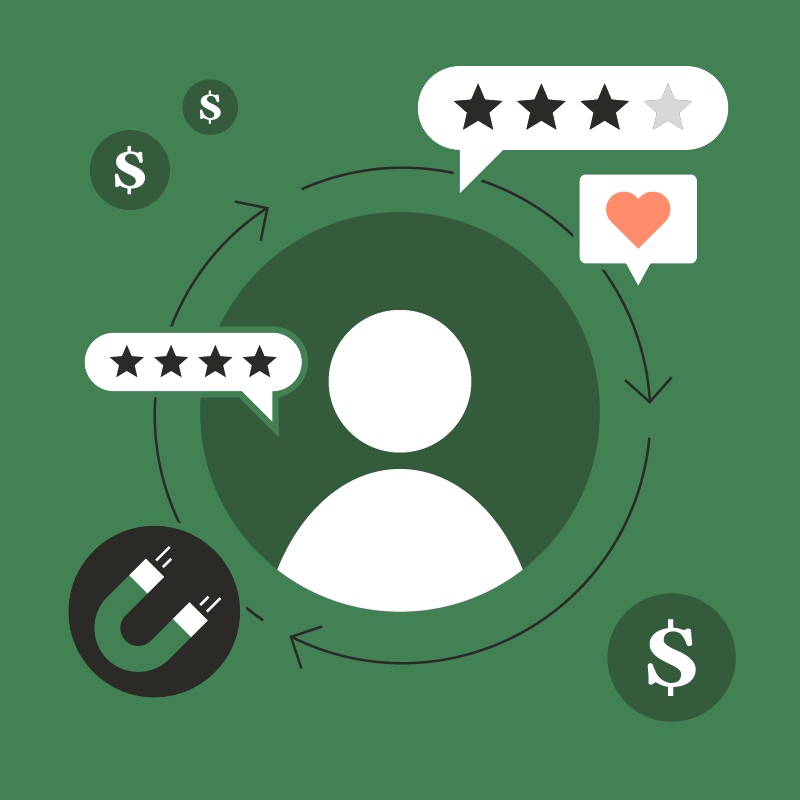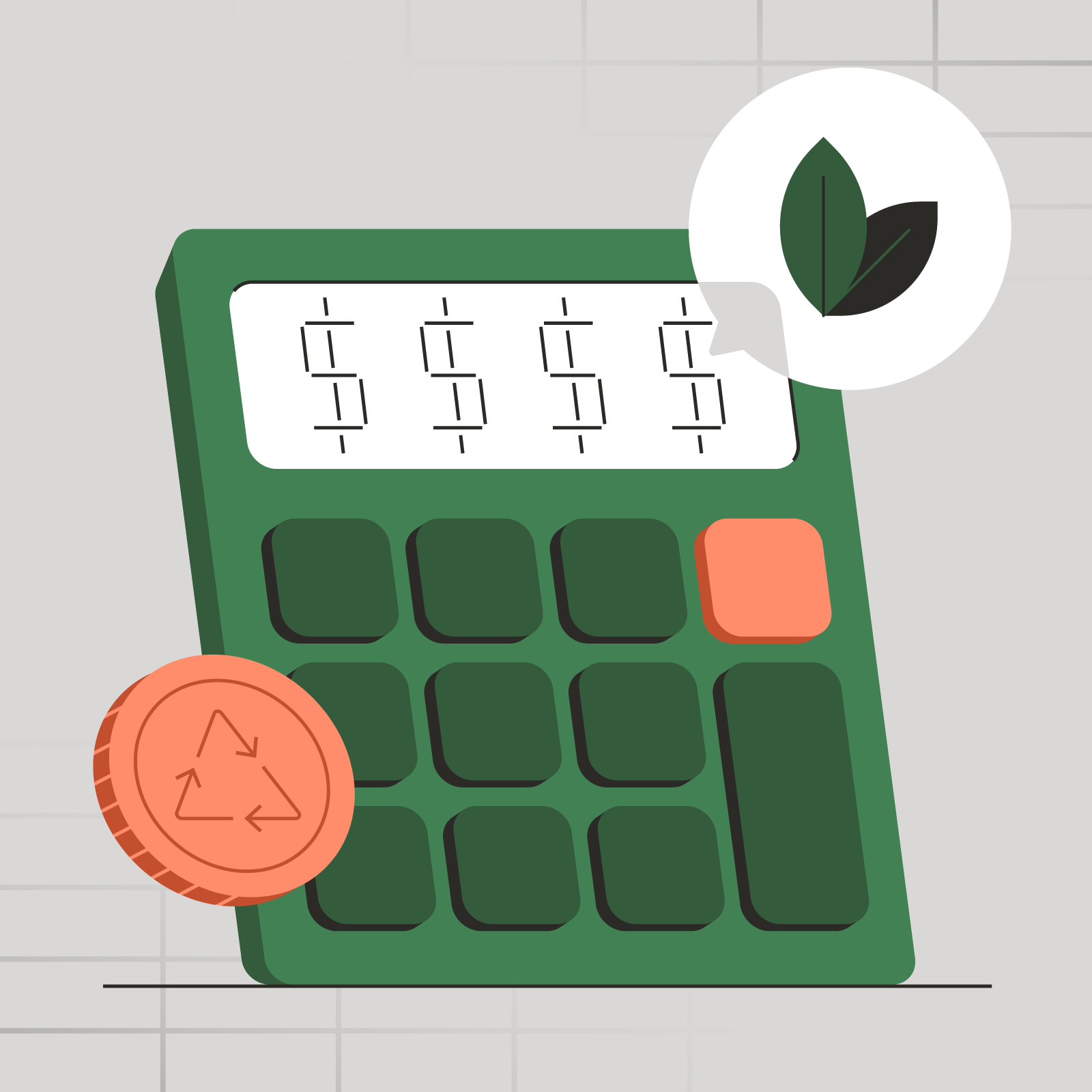Customer lifetime value (CLV) is a valuable metric that measures the total revenue a business can reasonably expect from a single customer account. Businesses can use CLV to make informed decisions about customer acquisition, retention and upselling strategies.
A higher CLV indicates a more loyal customer base and a stronger financial future for your business. Calculating your CLV enables you to determine the optimal customer acquisition cost (CAC), allocate resources effectively and prioritize customer segments with the highest potential value.
In this guide, we’ll walk you through the steps involved in calculating CLV, explore its strategic implications and provide real-world examples to help you apply this knowledge to your business.
What Is Customer Lifetime Value (CLV)?
Customer lifetime value (CLV) is a metric that estimates the total revenue a business can expect to earn from a single customer. It emphasizes the long-term financial impact of each customer, considering factors such as purchase frequency, average order value and customer lifespan.
Unlike CAC, which measures the investment needed to acquire a new customer, CLV focuses on the revenue a customer will generate.
Historic CLV uses past customer behavior to calculate the total revenue generated, while predictive CLV leverages machine learning models to forecast future customer value based on current trends and behaviors. Historic CLV relies on historical transaction data, while predictive CLV utilizes data points such as customer demographics, purchase frequency and product preferences to estimate future potential.
Customer retention rates reflect the percentage of customers a company keeps over a specific period, directly impacting CLV. A high retention rate generally leads to a higher CLV, as loyal customers tend to spend more over time.
Why Tracking Your Customer Lifetime Value Matters
Tracking CLV enables businesses to make informed, data-driven decisions that help them better serve their customers and improve revenue. CLV helps companies understand how much each customer contributes to their revenue over time, allowing them to prioritize high-impact strategies.
The benefits of calculating CLV include:
-
Improved customer acquisition strategies: Knowing the long-term value their customers bring enables businesses to adjust their acquisition budgets accordingly. Rather than overspending on short-term gains, companies can focus on attracting customers with higher CLV potential, maximizing return on investment in marketing.
-
Enhanced customer retention efforts: A higher CLV often indicates a loyal customer base. Focusing on retaining high-value customers helps businesses reduce their customer churn rate and increase overall profitability. Statistics show that a 5% increase in customer retention can result in a 25% or higher profitability boost.
-
Optimized resource allocation: Deep insight into CLV helps businesses allocate resources efficiently across departments. For example, if a customer segment has high CLV, a business might invest more in personalized service or loyalty programs to retain and grow that valuable group, leading to greater revenue from existing customers.
-
Better financial forecasting and business planning: Tracking CLV allows businesses to make more accurate projections about future revenue, which informs overall business planning. By combining CLV with other metrics to measure financial efficiency, businesses can benchmark their performance and set realistic growth targets.
-
More strategic marketing: With greater visibility into CLV, marketing teams can target their efforts toward high-value customers and optimize campaigns. Whether through retention-focused content or loyalty incentives, knowing who drives the most value allows for more strategic, tailored outreach.
/value-of-clv.png?width=1430&height=2320&name=value-of-clv.png)
Which Companies Benefit the Most From Tracking CLV?
Companies with recurring revenue models, particularly those focused on building long-term customer relationships, see the most significant benefits from tracking CLV.
A prime example is the Software-as-a-Service (SaaS) industry, where customer retention is paramount. While acquiring new customers is important, the real value lies in keeping existing ones happy and subscribed for extended periods.
While Vena’s financial planning and reporting software has helped companies across multiple industries realize the power of CLV, let’s look at two SaaS businesses as real-world examples.
James Leisk, FP&A Manager at Thomas International noted, “We're tracking how our customers are engaging with our platform, which is a really good lead indicator for us of future sales. It lets us identify upsell opportunities.”
-
Sprout Social: Used key SaaS KPIs such as CLV, CAC and efficiency ratios to closely monitor their expenses and gross margins, making data-supported decisions about their retention strategy and go-to-market initiatives.
"Revenue is always top-of-mind, but now we can dive even deeper into our expenses and gross margin with KPIs such as efficiency ratios, customer acquisition cost, lifetime value and more, according to Kristina Bittorf, Senior Manager of Finance at Sprout Social. “That’s the data we need to guide our retention strategy and big go-to-market initiatives."
By tracking CLV, any company can optimize pricing strategies, build stronger customer relationships and develop features that enhance customer retention—all leading to increased recurring revenue and a more sustainable business model.
Customer Lifetime Value Formula
The most commonly used formula to calculate CLV is:
CLV = Average Customer Value (ACV) x Average Customer Lifespan (ACLS)
Let's break down each component:
-
Average Customer Value (ACV): This is the average amount of money a customer spends on your products or services over a specific period, usually calculated monthly or annually.
-
Average Customer Lifespan (ACLS): This is the average duration of a customer relationship with your business, typically measured in months or years.
/3-steps-to-calculating-clv.png?width=1430&height=2355&name=3-steps-to-calculating-clv.png)
To calculate CLV with this formula:
-
Calculate the Average Customer Value (ACV) by dividing total revenue by the number of customers within a given timeframe.
-
Determine the Average Customer Lifespan (ACLS) by analyzing historical customer data to determine the average length of time customers continue to do business with you.
-
Multiply ACV by ACLS to get the customer lifetime value.
Let’s put this into practice with a basic example.
Suppose a company has an average customer value of $200 per year and an average customer lifespan of five years. Using the CLV formula, you would plug the numbers in like this:
$200 x 5 years = $1,000 CLV
This CLV calculation suggests that each customer contributes an average of $1,000 in revenue over their relationship with the business.
Customer Lifetime Value Calculator
Alternative Formula: RFM-Based CLV
Another approach is the RFM (Recency, Frequency, Monetary) formula, often used by companies with a large customer base and detailed transaction histories. It’s especially useful for e-commerce businesses, retail stores and subscription-based services.
This formula considers transaction frequency and retention rate alongside the discount rate, allowing for a more nuanced, long-term view of customer value:
RFM-based CLV = (Frequency x Average Transaction Value) x Retention Rate / (1 + Discount Rate)
Here, we consider four key factors:
-
Frequency: the average number of purchases made within a period
-
Average Transaction Value: the average revenue per purchase
-
Retention Rate: the likelihood that a customer will continue purchasing
-
Discount Rate: the rate at which future cash flows are discounted to their present value (accounting for the time value of money and risk)
By segmenting customers based on their recent purchases, purchase frequency and average transaction value, businesses can identify high-value customers and tailor marketing strategies accordingly. This approach can help businesses prioritize customer retention efforts, optimize marketing campaigns and make more informed decisions about product development and pricing.
How To Interpret Your CLV Score
Once you've calculated your CLV, it's time to interpret the results. A higher CLV score indicates that your customers are more valuable to your business. It suggests that they are more likely to make repeat purchases, refer other customers and remain loyal to your brand over a longer period.
However, a lower CLV score may signal underlying issues. Several factors can contribute to a lower CLV, including:
-
Poor customer experience: Negative customer experiences can lead to decreased customer satisfaction, lower retention rates and reduced CLV.
-
Ineffective marketing strategies: Ineffective marketing campaigns may fail to attract and retain high-value customers.
-
Suboptimal product offerings: A lack of innovative or relevant products can hinder customer satisfaction and loyalty.
-
High customer acquisition costs: Excessive spending on customer acquisition can reduce profitability and lower CLV.
Common Challenges When Calculating CLV
Calculating CLV can be a complex process for finance and operations teams due to several common challenges, which can impact the accuracy and reliability of the metric:
-
Data availability: Accurate and comprehensive customer data is crucial for calculating CLV. However, many businesses may lack the necessary data or have data quality issues.
-
Accuracy of predictions: Estimating future customer behavior, such as purchase frequency and lifespan, can be challenging. Factors such as market trends, economic conditions and competitive pressures can influence these predictions.
-
Choosing the right formula: Different CLV formulas have varying levels of complexity and accuracy. Selecting the appropriate formula for your specific business needs can be intimidating.
To address these challenges and improve CLV accuracy:
-
Invest in data quality: Make sure that your customer data is accurate, complete, up-to-date and easy to access. Implement data cleaning and validation processes to minimize errors.
-
Utilize advanced analytics: Employ advanced analytical tools and techniques, such as artificial intelligence, machine learning and predictive modeling, to improve the accuracy of your CLV calculations.
-
Start with a simple approach: Begin with a basic CLV formula and gradually incorporate more complex models as your data and analytical capabilities improve.
-
Continuously monitor and refine: Regularly review and update your CLV calculations to account for changes in market dynamics and customer behavior.
By addressing these challenges and following these tips, you can improve the reliability of your CLV calculations.
Strengthen Customer Acquisition and Retention With Better Financial Reporting
By understanding how to calculate the lifetime value of a customer, businesses can make more informed decisions about customer acquisition, retention and upselling strategies. By making CLV easy for your team to monitor (like on a dashboard tracking KPIs, for instance), you can identify high-value customer segments, optimize marketing spend and improve overall business performance.
To streamline your financial reporting and analysis processes and gain deeper insights into your business, consider leveraging Vena for SaaS. It’s powerful financial reporting analysis software that can prioritize measuring metrics such as CLV. Vena can help you automate your calculations, improve data accuracy and make data-based decisions that drive growth.

/value-of-clv.png?width=1430&height=2320&name=value-of-clv.png)
/3-steps-to-calculating-clv.png?width=1430&height=2355&name=3-steps-to-calculating-clv.png)




